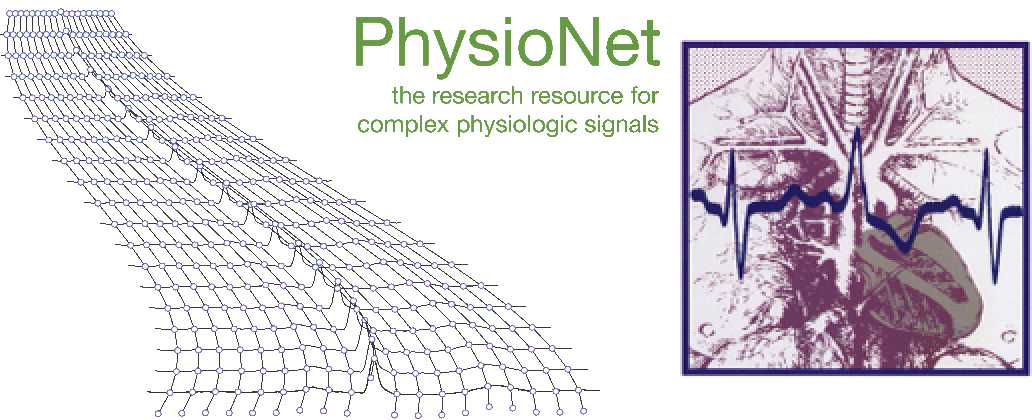- Registration form
- Example MATLAB and Python submissions and scoring code
- Submission instructions and form
- Leaderboard, results, and papers
- Public discussion forum
- Rules and deadlines
- Current and general FAQs
- About
The paper introduced by this abstract was one of the two winning papers in the PhysioNet/Computers in Cardiology Challenge 2005. The complete paper will be published in Computers in Cardiology 2005.
Large-Scale Dimension Densities for Heart Rate Variability Analysis
C Raab, N Wessel, A Schirdewan, J Kurths
University of Potsdam
Potsdam, Germany
For heart rate variability (HRV) data it is well known that a metronomic heart rate is pathological - the healthy heart is influenced by multiple neural and hormonal factors that result in variations in RR intervals. Even after three decades of study, new techniques continue to reveal properties of the time series of RR intervals. In this work, we reanalyse the HRV data from the 2002 CiC Challenge using the concept of large-scale dimension densities and additionally apply this technology to data of healthy persons and of patients with cardiac diseases. The large-scale dimension density D is estimated from the time series using a normalized Grassberger-Procaccia algorithm, which leads to a suitable correction of systematic errors produced by boundary effects in the rather large scales of a system. In this way, it is possible to analyse very short and non-stationary data, such as HRV. Moreover, this method allows us to analyse short parts of the data and to look for differences between day and night. The circadian changes in the dimension density enable us to distinguish almost completely between real data and computer generated data from CiC 2002 challenge using only one parameter. Furthermore, we analysed the data of 15 patients with atrial fibrillation (AF), 15 patients with congestive heart failure (CHF), 15 elderly healthy subjects (EH) as well as 18 young and healthy persons (YH). With our method we are able to separate completely the AF (D: 0.97±0.02) group from the others and, especially during daytime, the CHF patients show significant differences to the young and elderly healthy volunteers (CHF: 0.65±0.13, EH: 0.54±0.05, YH: 0.57±0.05, p<0.05 for both comparisons). Moreover, for the CHF patients we find no circadian changes in D (day: 0.65±0.13, night: 0.66±0.12, n.s.) in contrast to healthy controls (day: 0.57±0.05, night: 0.67±0.07, p = 0.00004). To the best of our knowledge, until today there was no single parameter for the complete separation of the considered groups from the 2002 CiC Challenge. Using the concept of large scale dimension densities, for the first time, a nearly perfect classification was performed. Finally, the application to the data of different cardiac diseases demonstrated the quality of being appropriate for clinical use.
Supported by the National Institute of Biomedical Imaging and Bioengineering (NIBIB) under NIH grant number R01EB030362.
© PhysioNet Challenges. Website content licensed under the Creative Commons Attribution 4.0 International Public License.
